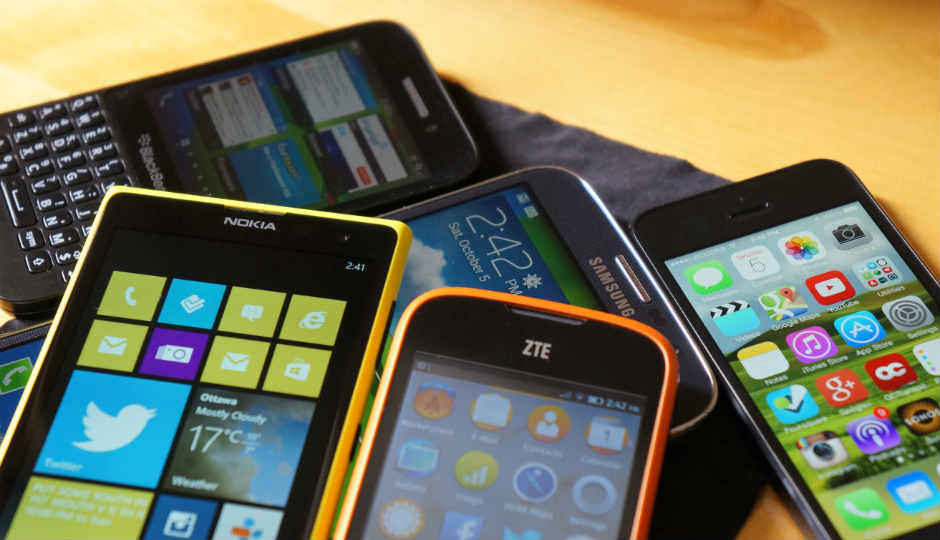15 years to smartphone saturation, and beyond
"Electronic Blood, VPUs, rollable displays, 3D chips, are all examples of innovation that are going to happen sometime in the future"

In 2005, a friend of mine used to carry the famed Moto Razr v3i. By 2007, he had changed phones twice, and was now using a Fly Hummer. Me? I had progressed from a Nokia 1600b, to a Moto Flip, to the Sony Ericsson R306i radio, all quintessential utility devices. That last one lasted me all the way till my first smartphone, the Samsung Galaxy Y. This was around 2009, and I had a touch screen Fly phone in there somewhere, that I ignominiously lost.
 Survey
SurveyAround the same time, another friend went from a Nokia N96 to the Samsung Galaxy Fit. I bought my phone a few months after him, and it didn’t take us much time to come to a realisation — our phones looked nearly the same. It didn’t really matter to me, but to him, he’d spent about 40% more, to get a similar device. “This would never have happened with my N96,” said he, disgusted and feeling betrayed by Samsung.
He had a valid point. Smartphones were destined for saturation, first in terms of design, and eventually other hardware. Processors don’t double in power as easily as they used to,and cameras aren’t always better. First, there was innovation in design, then, innovation in hardware, and finally, innovation in pricing and market strategies. It’s all done and dusted now, and you have multiple OEMs, making the same device, with different branding. Even Apple is out of ideas.
For each new phone that’s launched, the most common question asked, is why? Yes, everyone’s reading about phones, but they’re always wondering what’s new. Why are companies launching new phones that are barely upgrades to their original versions? Well, they of course have to make money, but won’t it be easier if they had truly “advanced” devices each year? The answer would surprise you.
You see, the death of Moore’s Law has led to a lull. A lull that has chip makers, OEMs and consumers, in a fix. They find it difficult to sell stuff, and you find it difficult to buy. But this isn’t the end. Innovation will make you wait this time, but it is happening. There are things like Electronic Blood, which Dr. Bruno Michel, from IBM Research, explained in an interview in the last issue. Electronic Blood allows power delivery and cooling of a processor simultaneously.
There was another story in that issue, about Vision Processing Units. We all hear about Augmented Reality, Google’s Project Tango, and DJI’s intelligent drones, but few hear what’s actually powering them. VPUs are responsible for essentially bringing eyes to machines, allowing them to see and intelligently interpret what’s around them. The same technology can, and will eventually be used in smartphones as well.
Electronic Blood, VPUs, rollable displays, 3D chips, are all examples of innovation that are going to happen sometime in the future. So, let’s talk about what you can look forward to in the nearer future. The answer to that is the IoT. If you consider the smartphone as a “thing” in the Internet of Things, you’re on the right track.
Historically, smartphones have evolved due to a need, increased utility, and more things to do. You had a better camera because they were planning to implement augmented reality eventually. You got better processors because they needed the power to do what you do with phones today. You get the drift.
With IoT, you get that new utility, but not if your smartphone is a medium to connect otherdevices. If you want Iron Man’s phone, you have to actually “need” it. It’s not about using a phone to control a TV, rather, make the TV an extension of the phone. You see shades of this in Android TV.
Smartphone innovation has been stagnant for a couple of years now, but it’s not the end. In fact, we’re far from it. We’re in a temporary stasis. I used to be an on-field reporter when I bought the Galaxy Y. It quickly replaced my notepad, my recorder, and the traditional reporter’s jhola. I quickly realised I needed more power, RAM and a better camera. Over the years, smartphones provided almost all the things I need, and it’ll happen again. It’ll just take longer.
This article was first published in the June 2016 issue of Digit magazine. To read Digit's articles first, subscribe here or download the Digit e-magazine app.